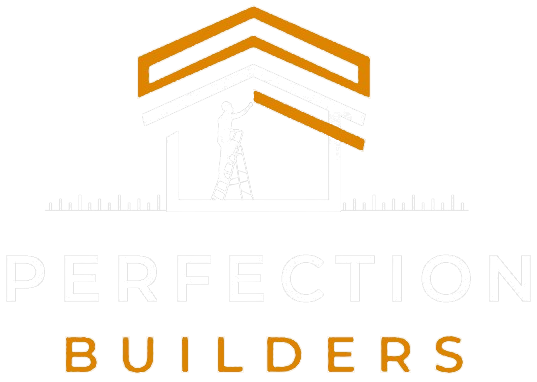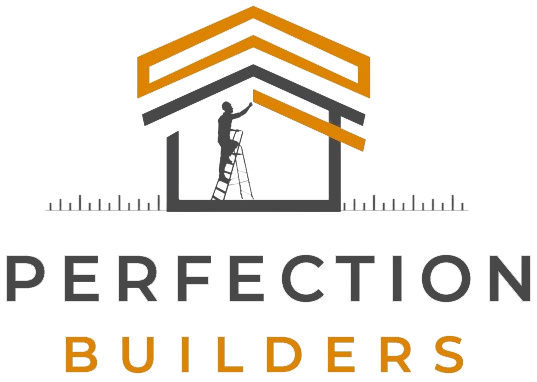Whole house remodeling key takeaways
- Whole-House Remodeling: A comprehensive approach to renovating every part of your home, enhancing functionality, and increasing resale value.
- Cost Considerations: Detailed insights into costs per square foot, room-specific expenses, and factors influencing overall expenditure.
- ROI and Resale Value: Analysis of the potential boost in home value post-remodel and the most profitable projects.
- Planning and Preparation: Essential tips for setting realistic goals and designing a renovation that reflects your vision.
- Financing Options: Comparison of funding methods, including home equity loans, credit cards, and HIP loans.
- Professional Help vs. DIY: Guidance on when to handle tasks yourself or bring in the experts.
- Contractor Selection: Strategies for finding reliable professionals and understanding their role in your remodel.
- Permitting Process: Overview of necessary permits and compliance for hassle-free remodeling.
- Safety Precautions: Advice on handling hazardous materials like asbestos and lead-based paint safely.
Introduction
Whole-house remodeling represents a transformative endeavor that not only revamps the physical structure of a home but also enhances its functional aesthetics and financial value. These projects require extensive planning and a deep understanding of the desired outcomes. From updating outdated designs to adapting a living space to suit new family dynamics better, the reasons behind choosing a whole-house remodel are as varied as they are significant. This article explores the nuances of whole-house remodeling, offering essential insights from planning phases to execution, ensuring homeowners are well-prepared for the undertaking.
Understanding Whole-House Remodeling
A whole-house remodel involves a comprehensive overhaul of your living space, where every room and area is updated or reconfigured. Homeowners typically embark on such extensive projects to address functional inefficiencies, modernize their interiors, or prepare their properties for a profitable sale. These motivations are driven by a desire to improve daily living and enhance the home’s marketability should resale be on the horizon.
Cost Considerations
Embarking on a whole-house remodel requires a clear understanding of the associated costs. On average, expenses can vary significantly based on factors like geographic location, the extent of the remodel, and the choice of materials—costs per square foot range from modest updates to high-end renovations. Detailed budgeting must consider room-specific expenses, such as kitchens and bathrooms, which typically require more substantial investments due to plumbing and high-end fixtures.
Resale Value and Return on Investment
Renovating your home can profoundly impact its market value, with some projects proving particularly lucrative regarding returns on investment (ROI). Notably, kitchen remodels and the addition of bathroom facilities consistently rank at the top for yielding the highest ROIs. This significant financial return is largely because these areas of a home are prioritized by potential buyers for their functional and aesthetic appeal.
Kitchens are often regarded as the heart of the home, where families gather and spend considerable time. A modern, updated kitchen can transform the entire feel of a home, making it more inviting and functional. Upgrades such as new countertops, state-of-the-art appliances, efficient lighting, and contemporary cabinets can drastically improve the space’s usability while adding a sleek, modern look that appeals to buyers. Additionally, these improvements are not just cosmetic; they also enhance the practicality of the kitchen, making cooking and socializing more enjoyable.
Similarly, adding an extra bathroom or renovating an existing one can significantly increase a home’s appeal and functionality, thereby boosting its value. Bathrooms are essential in daily routines and are a vital consideration for home buyers. Modern, well-designed bathrooms that prioritize comfort and efficiency, such as those with dual vanities, spa-like showers, and eco-friendly fixtures, can be decisive selling points. These features not only cater to the immediate needs of potential buyers but also offer the allure of luxury and personal retreat.
These types of renovations not only make a home more attractive and functional for current occupants but signal to potential buyers that the home is well-maintained and up-to-date, which can lead to competitive offers and a quick sale. Investing in high-ROI projects like kitchen and bathroom remodels enhances the living experience and capitalizes on their potential to increase the property’s overall market value. This strategic focus on key areas can lead to substantial financial benefits when it comes time to sell, making such renovations a wise financial decision for many homeowners.
Planning and Preparation
The success of a whole-house remodel hinges on meticulous planning. Setting clear design goals and establishing a feasible budget are crucial first steps. Homeowners should also consider current remodeling trends to ensure their updates meet personal satisfaction and appeal to future buyers, striking a balance between trendy and timeless designs.
Funding Options
Financing a whole-house remodel can be approached through various channels. Traditional options like home equity loans offer the advantage of borrowing against the existing value of your home, often at favorable interest rates. Alternatively, credit cards might be suitable for smaller projects or short-term financing, although they have higher interest rates. HIP loans, specifically designed for home improvement projects, can also be viable, providing targeted funds with potential tax benefits.
DIY vs. Hiring Professionals
Deciding whether to DIY or hire professionals depends mainly on the scope of the project and one’s skills. Simple cosmetic updates might be well within the reach of a competent DIYer. At the same time, structural changes typically require the expertise of licensed contractors. The decision should balance cost, time investment, and the complexity of tasks.
Finding and Working With Contractors
Choosing the right contractor is pivotal for a successful remodel. Recommendations from friends or trusted online platforms can lead to reputable professionals. It’s essential to review their past work, verify licenses and insurance, and discuss your project in depth to ensure their vision aligns with yours.
Permitting and Compliance
Obtaining the correct permits is a fundamental requirement for any remodeling project, ensuring that all modifications to a property are safe, up to code, and legally approved. The permitting process is meticulous in California, where strict building codes are enforced to ensure safety, especially in earthquake-prone areas.
In California, the permitting process begins with the homeowner or the contractor submitting detailed plans to the local building department. These plans must include comprehensive architectural and engineering drawings that illustrate the full scope of the project. This might encompass structural alterations, electrical system upgrades, plumbing changes, and any modifications that could affect the building’s original design or structural integrity.
Once submitted, these plans are reviewed by city or county officials to ensure they comply with California’s building codes, zoning laws, and any other relevant regulations. This review process can be extensive, requiring modifications to the plans if certain aspects do not meet the required standards. For instance, considerations such as seismic safety, energy efficiency (mandated by California’s Title 24), and environmental impact are heavily scrutinized.
After approval of the plans, the required permits are issued, and construction can legally commence. However, obtaining the permit is a process that has yet to be completed. Throughout the remodeling process, inspectors from the building department will make site visits to ensure that the work complies with the approved plans and maintains adherence to all building codes. These inspections are critical, covering everything from the foundation and framing to the electrical work and plumbing systems, ensuring each project phase meets safety standards.
After the project, a final inspection is conducted. If the project passes this inspection, a certificate of occupancy or a completion certificate is issued, indicating the project meets all legal and safety standards. This rigorous process ensures that all structural changes are safe and sustainable, reflecting California’s commitment to building safety and environmental responsibility. Such thorough regulatory oversight is designed to protect homeowners and future occupants of the remodeled property.
Safety Precautions
Dealing with hazardous materials such as asbestos and lead-based paint is critical to any remodeling project involving older structures. These substances pose significant health risks if not handled correctly. Asbestos, once a popular building material for its fire-resistant properties, can cause severe respiratory issues and diseases like mesothelioma when its fibers are airborne. Similarly, lead-based paint, which was commonly used before its ban in 1978, can create dust that leads to lead poisoning, affecting brain development and causing other severe health issues.
Due to the severe health risks and the specific expertise required to manage these hazards safely, it is imperative to engage professionals who specialize in hazardous material management. These experts are trained to identify, remove, and dispose of these materials following strict safety standards and regulatory requirements. They ensure that all safety protocols are followed, including sealing off the renovation area and using specialized equipment such as HEPA filters to prevent the spread of contaminants.
Additionally, these professionals will handle the legal aspect of hazardous waste disposal, ensuring that all toxic materials are discarded in a manner that complies with local, state, and federal regulations. Employing qualified professionals helps protect the health of everyone involved in the remodeling project. It shields homeowners from potential legal liabilities from improper handling of hazardous substances. This careful approach to managing risks associated with hazardous materials is essential for a safe and successful home renovation.
Whole-house remodeling is a significant but rewarding investment. With careful planning, appropriate funding, and professional assistance, homeowners can confidently embark on this transformative journey.


